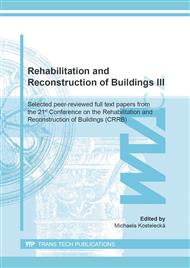p.3
p.10
p.15
p.24
p.32
p.39
p.45
p.51
Effect of Binder Components on the pH of Concrete Mixture with Low pH Intended for Deep Geological Repository for Radioactive Waste in the Czech Republic
Abstract:
This paper deals with the development and research of low pH concrete mixtures intended for the deep geological repository for radioactive waste. Mixtures, in particular those made from materials originating in the Middle Europe, specifically Czech Republic, were designed due to the diversity of the raw materials’ properties. In this first part, a large number of cement mortars were designed, on which the effect of active ingredients (microsilica, slag) on the pH value over time were tested. From the results of the cement mortars’ pH measured after 90 days, a concrete formula was designed. A mixture with a lower proportion of cement and a higher proportion of microsilica seems to be the best. The slag serves only as a supplement in the place value of several weight percent of the total binder volume. Also, the control measurements of basic material characteristics, such as volumetric mass density and compressive strength were performed on these mixtures.
Info:
Periodical:
Pages:
15-23
Citation:
Online since:
October 2020
Keywords:
Price:
Сopyright:
© 2020 Trans Tech Publications Ltd. All Rights Reserved
Share:
Citation:


